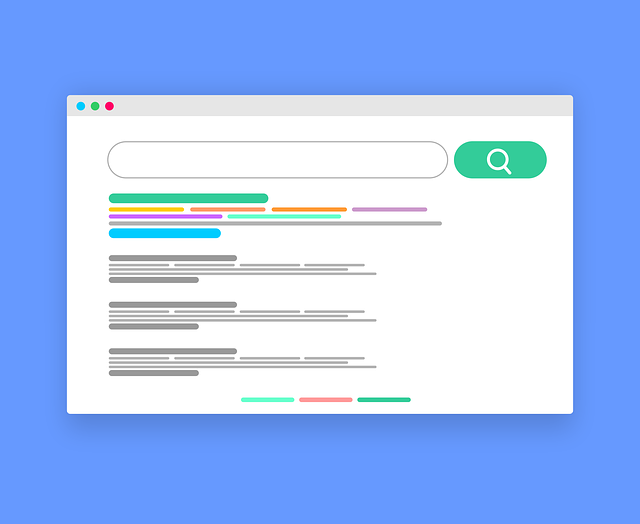Understanding the Best Web Design and Hosting for Small Businesses :
Why a Professional Website Is Important
For small enterprises, a quality website acts as their online storefront. Since it's frequently their initial point of contact with potential clients, making a good impression is crucial. A well-designed website is essential for the following main reasons:
Credibility A well-designed website increases credibility and confidence among prospective clients. It is an indication of the caliber and dependability of the company.
User Experience: A website that is well-structured facilitates users' navigation and helps them locate the information they require.
SEO Benefits: By making a website more visible in search results, search engine optimization can increase organic traffic.
Marketing Tool: Businesses can display their goods and services, disseminate information, and interact with clients via websites, which are effective marketing tools.
24/7 Accessibility: A website offers prospective clients the chance to discover more about the company at any time, in contrast to a physical store.
In order to maximize efficacy, a few crucial elements should be given top priority when thinking about web design for small businesses:
1. Design that is responsive
Responsive design is crucial because mobile devices are being used more and more. A responsive website offers visitors on PCs, tablets, and smartphones a smooth experience by dynamically adjusting its layout and content dependent on the screen size.
2. Navigating with ease
Having intuitive navigation is essential to maintaining visitors' interest. Quick navigation to essential information and a well-organized menu facilitate users in finding what they're looking for.
3. Eye-Catching Images
Having visually appealing graphics, movies, and photos is important for keeping people interested. Attention can be drawn in and the overall aesthetic improved by visually appealing content that is consistent with the brand identity.
4. Clearly marked calls to action
A successful call to action (CTA) directs people to do desired actions, such buying something or subscribing to a newsletter. To promote engagement, call to action (CTAs) should be positioned strategically and written clearly.
5. Quick loading periods
The functionality of a website is essential to consumer pleasure. High bounce rates caused by slow loading pages can have a detrimental effect on both search engine rankings and user experience. Loading speeds can be increased by reducing HTTP requests and optimizing images.
6. Search Engine Guidance
For better search engine exposure, SEO recommended practices must be incorporated during the design phase. This entails adding pertinent keywords to header tags, content, meta descriptions, and page titles.
A website's functionality and dependability depend on choosing the correct hosting company in addition to having an efficient web design. When selecting hosting services, small enterprises should keep the following factors in mind:
1. Uptime Promise
An excellent uptime guarantee (preferably 99.9% or greater) should be provided by a trustworthy hosting company. Downtime can have a detrimental effect on user experience and result in lost income.2. Customer assistance
Timely resolution of any problems that may occur depends on responsive customer assistance. Seek out hosting companies that provide round-the-clock assistance via a variety of channels, including live chat, phone, and email.3. Safety Aspects
A company website must take security into account. Select a hosting company that has strong security features like firewalls, SSL certificates, and frequent backups.5. Flexibility
A company's hosting requirements could alter as it expands. Choose a hosting company that provides scalable solutions so that companies can change plans as needed without experiencing major disruptions.6. Price and Worth
Although cost is a significant element, it shouldn't be the only one taken into account. Analyze the value provided by the hosting company in light of their charges. A marginally increased investment might result in improved support and performance.How do ensure responsive and optimized best website to use for small business ?
The two go hand in hand: responsive design and mobile optimization. It guarantees that a website works well on mobile devices in addition to having a nice look. Mobile optimization is essential for small businesses for the following main reasons:User Experience: When a website is mobile-optimized, users can navigate more easily, read content without having to zoom in, and interact with aspects without getting frustrated.
Search Engine Rankings: Mobile-friendly websites are given preference in search engine rankings by engines such as Google. An optimized mobile website has a higher probability of ranking first in search results, which increases natural traffic.
Enhanced Interaction: When a website is easy to use on their devices, users are more inclined to interact with it. Longer visit times, fewer bounce rates, and greater conversion rates can result from this.
How to Make Sure Your Website Is Optimized and Responsive:
1. Select the Correct Platform
Making a responsive and optimized website starts with choosing the appropriate platform. Well-known systems that facilitate responsive design include:
WordPress: Distinguished for its adaptability and copious theme possibilities, WordPress facilitates the creation of user-friendly responsive websites.
Wix: An easy-to-use drag-and-drop website builder with responsive design templates.
Shopify: Shopify offers responsive designs that are geared for mobile purchasing, making it the perfect choice for e-commerce enterprises.
2. Make Use of Templates and Responsive Themes
Using responsive themes or templates helps expedite the process of website design and guarantee that the site is mobile-friendly from the outset. Numerous content management systems and website builders provide a range of responsive templates that may be tailored to match a company's identity.
3. Optimize Media and Images
Although huge file sizes might cause loading times to increase, particularly on mobile devices, they are an important part of website design. To make pictures more optimum:
Reduce Image Size: Utilize programs like Image Optim or Tiny PNG to minimize file sizes without compromising quality.
Make Use of Proper Formats: Select the appropriate image format, such as PNG for transparent graphics and JPEG for photos.
Make use of lazy loading: With this method, photos are only loaded when they are in the viewport, improving initial load times.
4. Implement quick loading times
Speed of a website is important for SEO and user experience. To accelerate loading times:
Minimize HTTP Requests: To speed up load times, lessen the number of components on a website.
Utilize Browser Caching: Set up caching in your browser to save frequently requested resources so that returning users can get them more quickly.
Employ a Content Delivery Network (CDN): CDNs disperse website content among numerous servers across the globe, guaranteeing users, wherever they may be, speedier access.

How do handle project timelines and deadlines of best web design websites in Indore ?
Recognizing the value of project timelines and deadlines of best web design websites in Indore :
Why Timelines Are Important Project timeframes are necessary to guarantee that a web design project is finished on schedule and enable clients to launch their websites on schedule. A clearly defined timeline guarantees that all stakeholders are in sync with the project's advancement and aids in resource planning and task management.
Effect on Customer Contentment Client satisfaction is directly correlated with meeting deadlines. Customers look on web design firms to fulfill their launch dates, which may be associated with product launches, marketing campaigns, or other corporate achievements. Postponements may result in lost chances, eroded confidence, and possible monetary damages.
Setting Explicit Project Objectives and Goals
1. The First Client ConsultationSetting up specific goals and objectives is the first stage in managing project timeframes. Web design companies in Indore work closely with clients to understand their business needs, target audience, and website purpose during the initial consultation. This aids in defining the project's scope and establishing reasonable expectations.
2. Outlining the Task's Scope
The precise deliverables, features, and functionalities that the website will have are outlined in a well-defined scope of work. Throughout the project, this document is used as a guide and aids in avoiding scope creep, which can cause delays.
3. Establishing Benchmarks
Tracking progress and making sure the project stays on schedule can be accomplished by dividing the project into smaller, more manageable milestones. Every milestone stands for a significant stage of the project, including the conception of the initial designs, their creation, testing, and deployment.
Interaction and Cooperation
1. Frequent Updates for ClientsMaintaining project timeliness and controlling expectations need effective client communication. Regular update meetings are arranged by web design companies in Indore with their clients to go over progress, address any problems, and change the timeframe as needed.
2. Communication Within the Team
Internal team communications are just as crucial as external client communications. To guarantee that everyone is in agreement and working toward the same objectives, regular team meetings, daily stand-ups, and collaborative platforms like Slack or Trello are helpful.
3. Instruments for Collaboration
Collaboration platforms such as Asana, Basecamp, or Jira are frequently used by web design organizations for task management, progress tracking, and team communication. These resources offer a consolidated platform for project management, making it easier to monitor timelines and deadlines.
Testing and quality assurance (QA) are essential steps in the web design process. These stages are planned into the project schedule in order to find and address any problems early on. Typical testing stages consist of:
Design testing: Verifying that the website's aesthetic components adhere to the specifications and brand of the client.
Verifying that all features and capabilities operate as intended is known as functionality testing.
Testing for usability involves evaluating the user experience to make sure the website is simple to use and intuitive.
Testing with Multiple Browsers and Devices: Ensuring that the website operates properly on various browsers and devices.
For More Visit : http://createncode.com/




